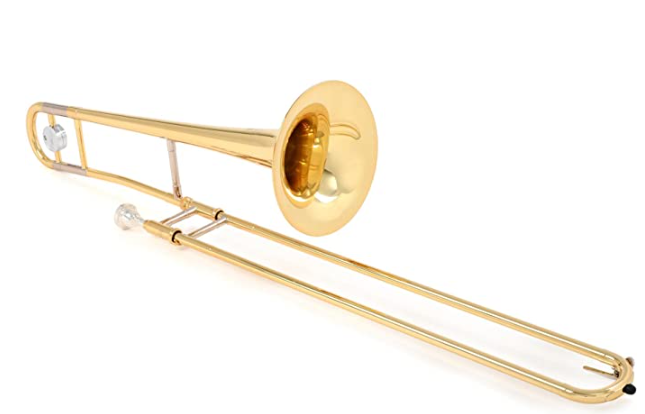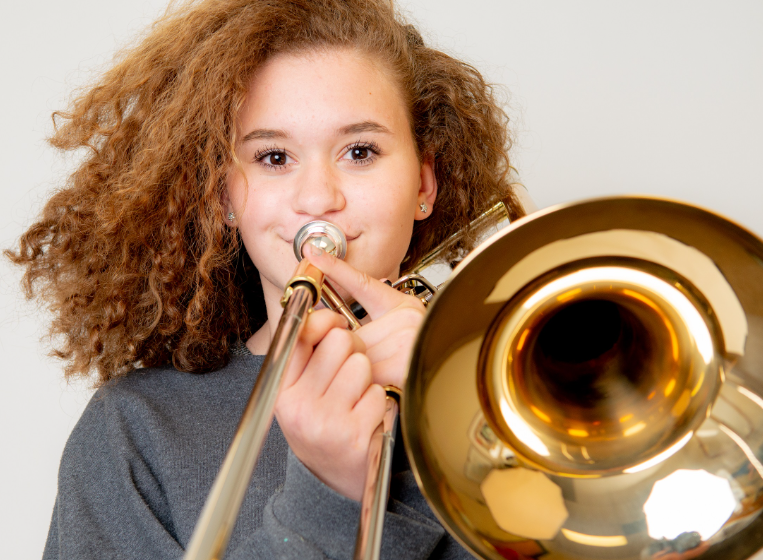The cost of a trombone varies widely, ranging from $100 for beginner models to over $5,000 for professional-grade instruments, excluding additional costs for maintenance and accessories.

Factors That Influence the Cost of Trombones
Understanding the factors influencing the cost of a trombone is essential to making an informed buying decision. This typically includes brand and manufacturer, materials used, design and features, and the condition of the instrument.
Brand and Manufacturer
The brand and manufacturer can greatly impact the cost of a trombone. Renowned brands like Yamaha, Bach, and Conn often have higher prices due to their reputation for quality, durability, and superior sound production. However, many less-known brands also produce good quality trombones for a lower price.
Materials Used
Materials used in the construction of a trombone play a significant role in determining its price. Most trombones are made of brass, but the type of brass used, as well as the inclusion of other materials like nickel silver, can affect the cost. More expensive trombones may also have additional features such as gold or silver plating.
Design and Features (F-attachment, Double Rotor, etc.)
The design and specific features of a trombone can also influence its price. For example, tenor trombones often come with an F-attachment, enabling more note options and versatility. A trombone with a double rotor system, which allows for a broader range of notes and technical possibilities, will typically cost more than a standard model.
Condition: New vs Used
Finally, the condition of the trombone – whether it’s new or used – can significantly affect the cost. New trombones generally come with a higher price tag, but they also include manufacturer’s warranties and guarantees. Used trombones, on the other hand, can be a more affordable option, especially for beginners or those on a budget. However, potential buyers should thoroughly inspect used instruments for any needed repairs or maintenance issues.
Hidden Costs Involved in Trombone Ownership
In addition to the initial purchase price, owning a trombone comes with a series of hidden costs that every potential owner should consider. These hidden costs include regular maintenance, repairs and replacement parts, and the cost of essential accessories.
Regular Maintenance
The maintenance of a trombone involves a series of regular tasks such as cleaning, slide greasing, and occasional professional servicing. These upkeep efforts are crucial to preserving the trombone’s sound and functionality. Over time, the costs associated with items like cleaning kits, slide oil, and professional services can add up.
Repairs and Replacement Parts
Trombones, like any instrument, are susceptible to wear and tear. Damages to the slide, bell, or other parts may require professional repairs or even replacement parts, which can significantly add to the total cost of ownership. It’s advisable to factor in potential repair costs when considering the purchase of a used trombone, as these instruments may be more likely to require repairs.
Accessories: Mouthpieces, Cases, Mutes, etc.
Lastly, various accessories are necessary for playing, protecting, and transporting the trombone. Mouthpieces come in different sizes and materials, each affecting the sound and ease of play differently. While a mouthpiece usually comes with the purchase of a new trombone, players often choose to buy a different one to better suit their needs.
Protecting the trombone with a sturdy case is crucial, especially for musicians who travel frequently. Cases can vary greatly in price depending on their material and design.
Mutes are used to alter the sound of the trombone for certain pieces of music. There are various types of mutes available, each producing a different sound effect, and a player may need to purchase several.
These accessories, while they may seem minor, can collectively add a significant amount to the overall cost of owning a trombone.

How to Save on Trombone Purchase
There are several strategies to save money when purchasing a trombone. They include finding good deals, buying used instruments, trading or upgrading your existing instrument, and exploring rent-to-own options.
Finding Good Deals
One of the first strategies is to look for good deals on trombones. This could involve browsing through different music stores, comparing prices, and keeping an eye out for sales and discounts. Online platforms, such as eBay and Amazon, often feature discounts and offers on musical instruments, including trombones.
Buying Used Trombones
Purchasing a used trombone can be a cost-effective alternative to buying new. Used instruments can often be found at a significantly reduced price and may still offer excellent quality. Places to find used trombones include online classified websites, local music stores, or even school music departments. Always remember to inspect the instrument thoroughly or have a knowledgeable friend or teacher assist you in determining the instrument’s condition before purchase.
Trading or Upgrading Instruments
If you already own a musical instrument that you no longer use, consider trading or upgrading it. Some music stores offer trade-in programs where you can exchange your old instrument for a discount on a new one. This can be a great way to offset the cost of a new trombone.
Rent-to-Own Options
Lastly, rent-to-own programs can be an affordable option for those unable to pay the full cost upfront. These programs allow you to rent the trombone for a monthly fee, with the option to purchase the instrument at the end of the rental period. Be sure to read and understand the terms of any rent-to-own agreement before committing, as the total cost can sometimes be higher than buying the instrument outright.
Each of these strategies offers potential cost savings, but what works best will depend on your individual circumstances and needs.

